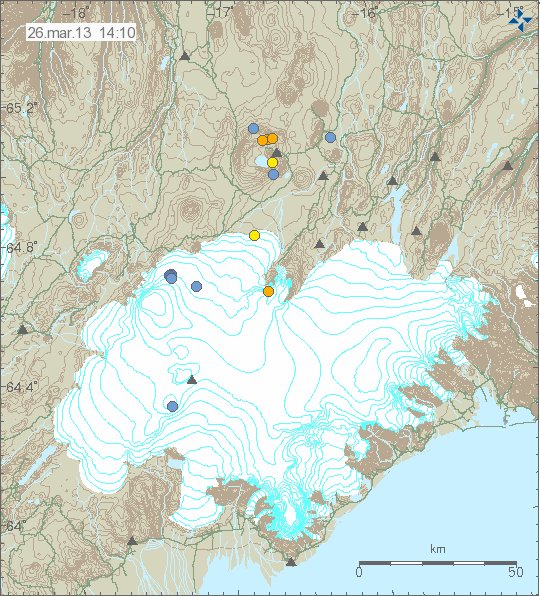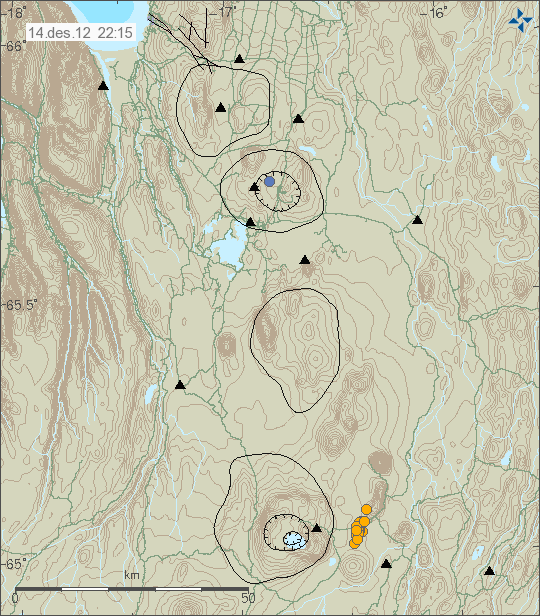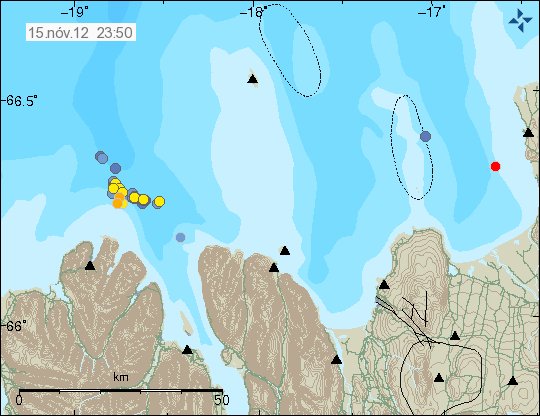The current events in Askja volcano started in Week 9 of the year 2010. Before that, Askja volcano has been showing signs of change since the year 2007 at least. In the year 2010, Week 9 a earthquake swarm was recorded by Iceland Meteorological Office. Most of the earthquakes where at around 20 km depth, and it was followed by considerable amount of harmonic tremor activity. I did know about it at the time, but I did think it would be at least 10 to 20 years until Askja volcano would not erupt. But this might have been a event in an series of event that started long time ago, without me knowing about it before (I am still checking data, it takes some time).
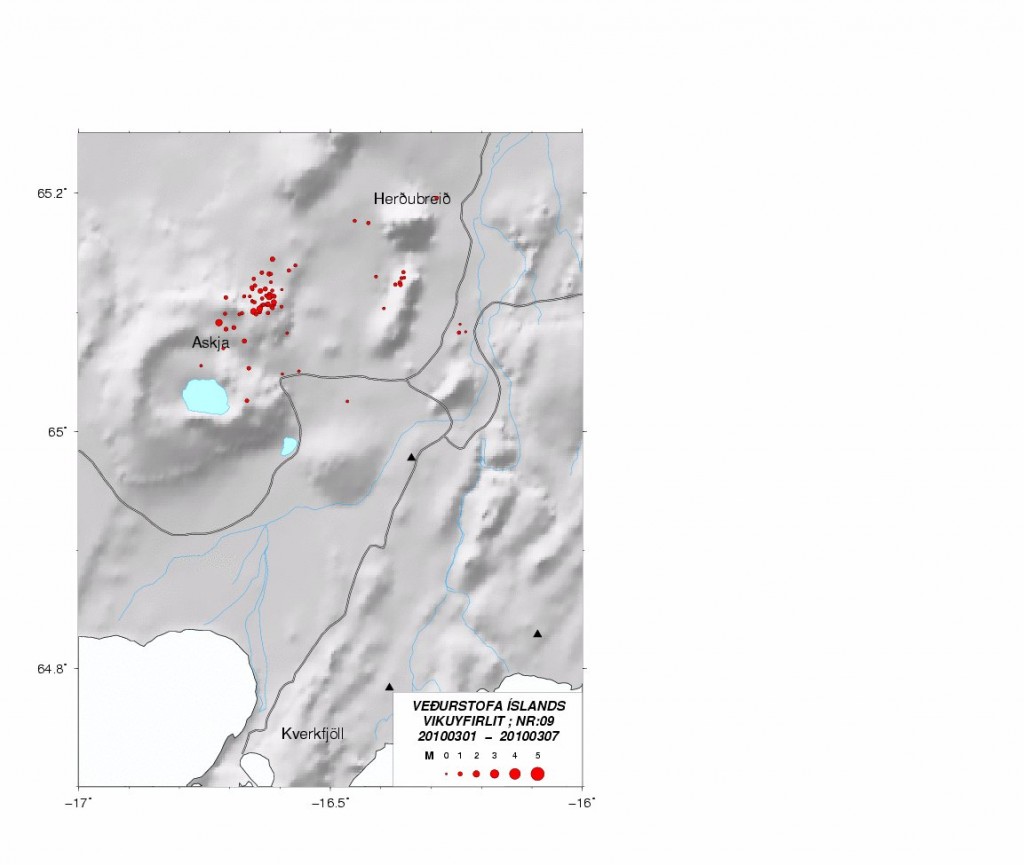
The earthquake activity in Askja volcano in Week 9 of the year 2010. Copyright of this picture belongs to Iceland Meteorological Office.
The image above clearly shows where magma was flowing into Askja volcano around 20 km depth. But they are to the north-east of Askja lake. The depth of this earthquakes was from 20 to 23 km.
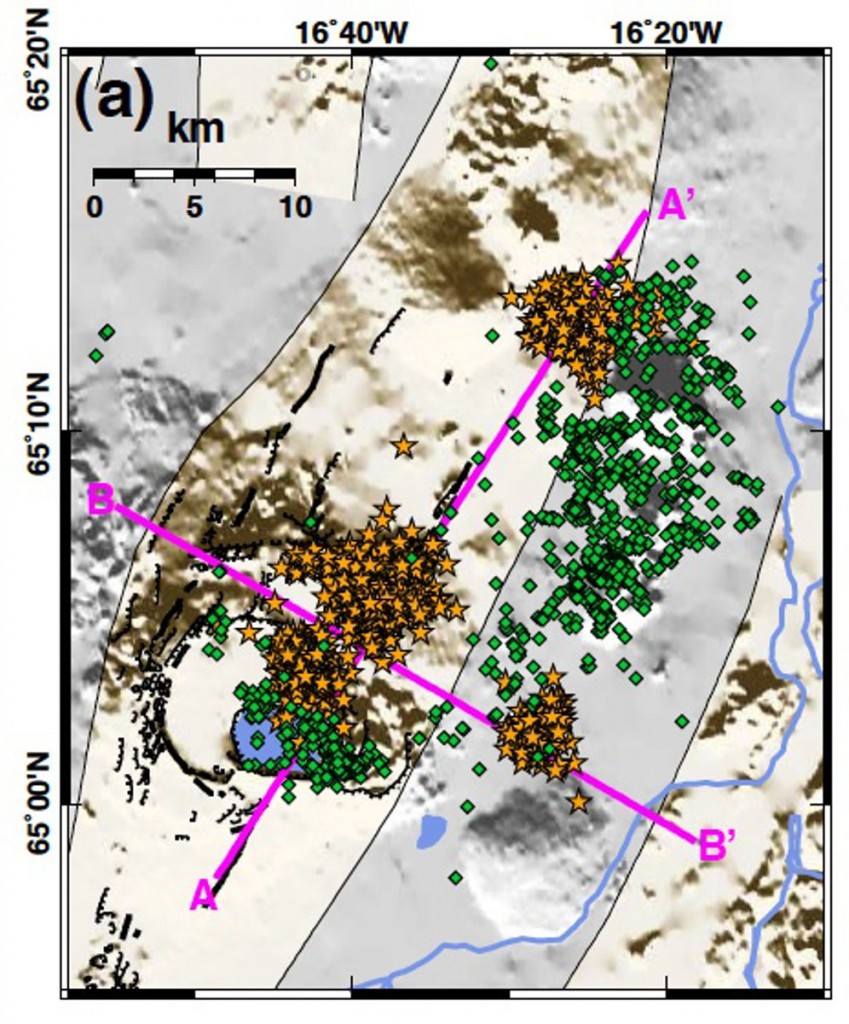
Map of earthquake activity in Askja volcano. The green dots are earthquakes with a shallow depth, that is depth from 2 to 8 km. Yellow earthquakes have the depth of 12 to 30 km. This data is from the year 2007 at least. Copyright of this picture belongs to its owner (Janet Key).
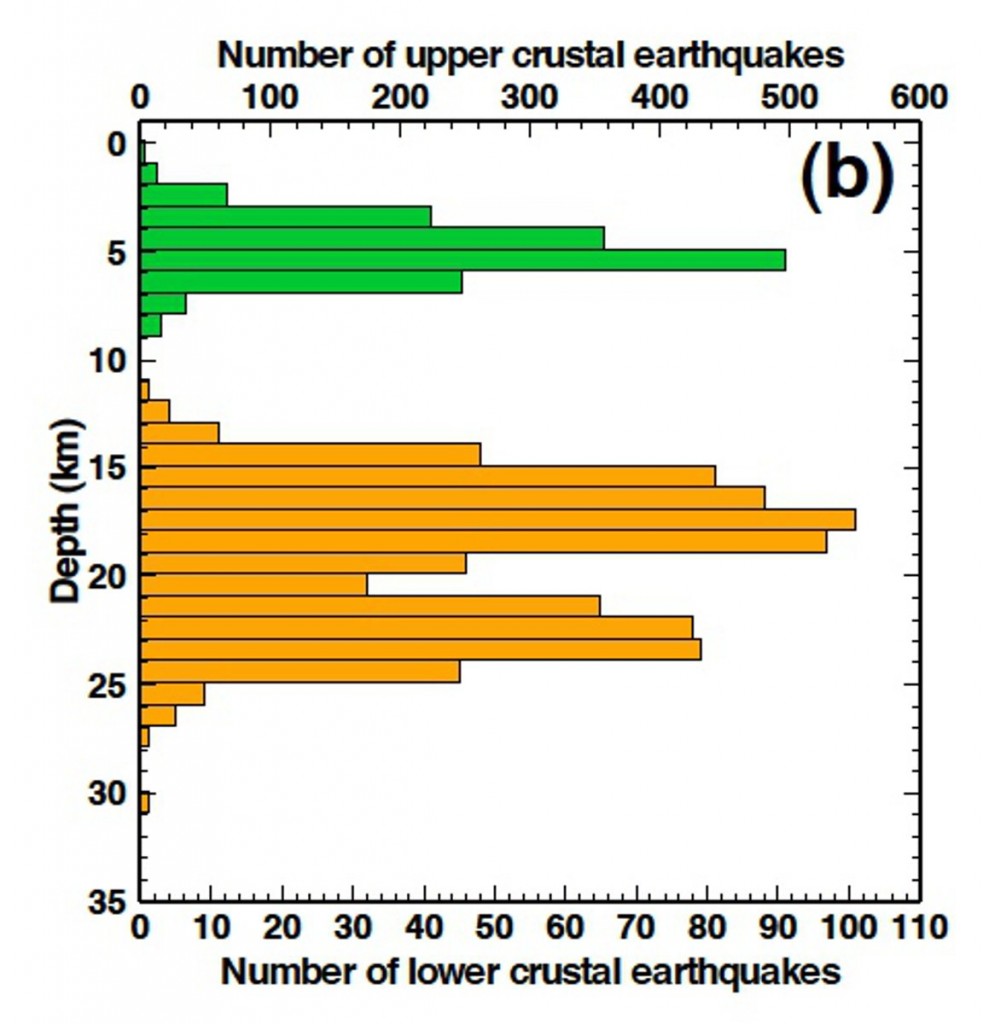
The depth of the earthquakes in Askja volcano. Copyright of this picture belongs to its owner (Janet Key).

Depth of the earthquakes. This view shows also where the earthquakes are taking place in Askja volcano and close to it. Copyright of this picture belongs to its owner (Janet Key).
All of this map and charts are from this blog post here.
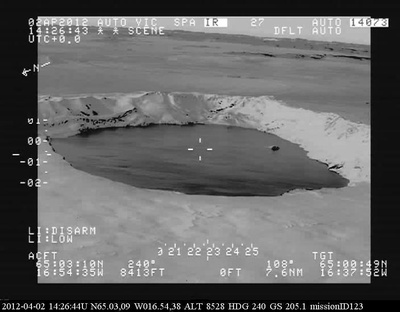
This is a heat camera image of Askja lake. Copyright of this picture belongs to Iceland Coast Guard, the image is from here.
Last year (2011) there was an dike intrusion in north part of Askja volcano. This dike intrusion was clear by a earthquakes that took place. But it stopped and has not shown any activity again in this area. As sometimes happens with dike intrusions. But this activity is an good sign that magma is now flowing into Askja volcano again. But over period of at least 10 to 20 years, it seems that magma has been flowing out of Askja volcano system. Where it has been going I have no idea. But some hypothesis suggests that it might be flowing into Krafla volcano. But there is no good data to support this hypothesis in partial.
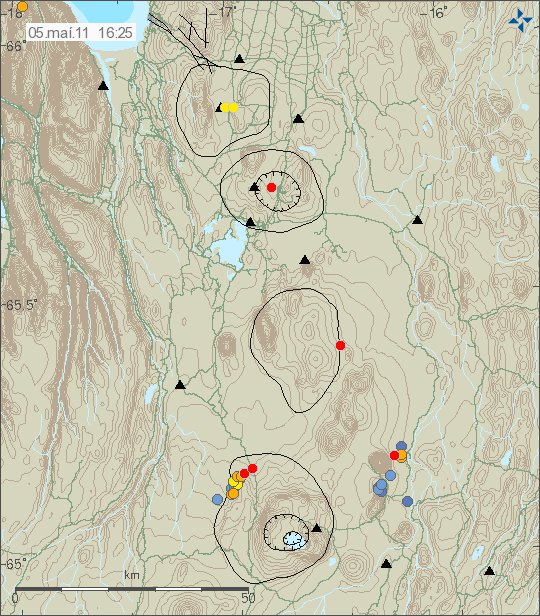
Activity in Askja volcano in the year 2011. This activity took place on 05.05.2011 at 16:25 UTC. Copyright of this picture belongs to Iceland Meteorological Office.
At the moment there is nothing that suggest eruption is imminent. But current progress in Askja volcano is something to keep an watch on. But it is also clear that current status in Askja volcano is changing fast. So while there is nothing to suggest a eruption at the moment, it might change without warning in Askja volcano.
Pictures of Askja lake.
Askja lake 12 June 2011.
Picture of Askja lake (32 months ago according to flickr.)
